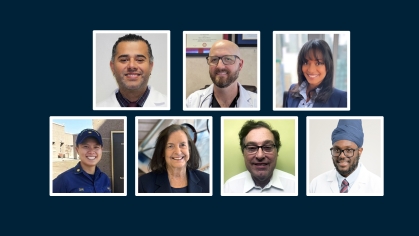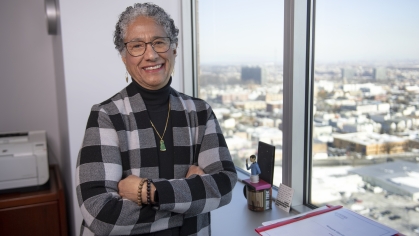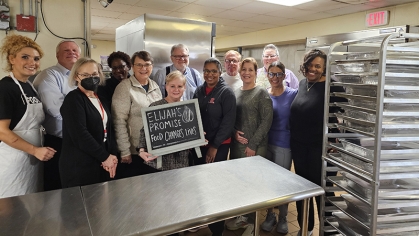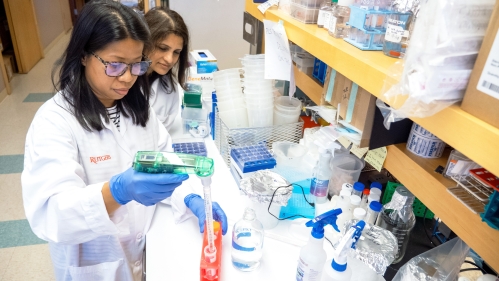
How the largest higher education merger in United States history remade Rutgers as a medical and health sciences giant
On July 1, 2013, the University of Medicine and Dentistry of New Jersey (UMDNJ) merged with Rutgers to create Rutgers Biomedical and Health Sciences (RBHS), transforming the state’s flagship university into a global leader in learning and innovation.
Among the key assets transferred from UMDNJ were the New Jersey Medical School in Newark and the Robert Wood Johnson Medical School in New Brunswick. Overnight, Rutgers nearly doubled its research and development funding to more than $720 million annually and became a crucial link in the state’s biomedical development pipeline.
“This was, in many ways, the answer to a very specific need in the state’s life sciences ecosystem – the need for increased medical innovation and the benefits that come with it for students, patients and the economy,” said Debbie Hart, president and chief executive of BioNJ, a life-sciences trade association. “The integration of UMDNJ and Rutgers has delivered, and continues to deliver, significant and meaningful economic results for New Jersey and beyond.”
Founded in 1766, Rutgers had long been one of the nation’s only public universities without a medical school. It was an omission that had cost the state. Before the creation of RBHS, pharmaceutical and biotechnology companies preferred states such as California or Massachusetts to be close to Stanford, Harvard and the Massachusetts Institute of Technology. Today, companies are coming to New Jersey because of Rutgers and RBHS.
How Rutgers climbed the ranks of national research pedigree is a tale of legislative wrangling, administrative triumph and old-fashioned hard work. This is the RBHS creation story, told by those leading the initiative, in three parts.
Part I: The Med School Question
The integration of Rutgers and UMDNJ was the result of a decades-long discussion to reshape New Jersey’s higher education landscape and propel the state’s economy. A series of task forces, beginning in October 2002 and culminating in February 2012, all reached the same conclusion: To do that, Rutgers needed a medical school.
When Gov. Chris Christie came to office, in January 2010, momentum already was building toward a Rutgers-UMDNJ merger. Christie formed a task force, headed by former New Jersey Gov. Thomas H. Kean, to explore how to get it done.
Dave Weinstein, vice president of state government affairs at Rutgers, was a policy adviser to Christie and the Kean task force. Denise V. Rodgers, MD, was the final president of UMDNJ and is the vice chancellor of interprofessional programs at RBHS. Christopher J. Molloy, PhD, former dean of the Rutgers Ernest Mario School of Pharmacy, was the interim provost for RBHS during the integration and subsequently served as senior vice president for research and Chancellor for Rutgers–New Brunswick. He is currently a university professor. Peter McDonough is Rutgers’ senior vice president for external affairs.
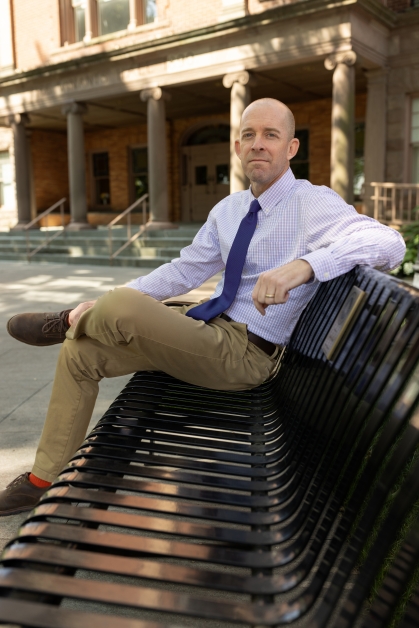
Weinstein: In April 2010, Gov. Christie formed his first task force on higher education, chaired by former Gov. Kean, which I staffed as a policy adviser. One of the key questions that the task force was asked to answer was what to do about Rutgers and its lack of a medical school.
Rodgers: To understand the implications of this, we first need to look back at UMDNJ’s history. I came to UMDNJ in 1997 as the senior associate dean for community health at Robert Wood Johnson Medical School. Before it was called Robert Wood Johnson Medical School, it was called the Rutgers Medical School. While it wasn’t of Rutgers, it bore the name and many people wanted it to be part of Rutgers. So, for a very long time, there was momentum to try to get Robert Wood Johnson Medical School transferred into Rutgers University.
The backdrop to the timing of Gov. Christie’s involvement, however, was that UMDNJ was under federal monitoring for past issues, including Medicaid fraud, which contributed to the perception that UMDNJ was a damaged or corrupt organization.
Weinstein: Ultimately, the Kean committee needed to create a report that looked at the overall higher-education landscape in the state – issues such as affordability, access and retention of in-state talent. But we also needed to include, as a recommendation, fundamental changes for UMDNJ and for Rutgers. There was consensus in the committee.
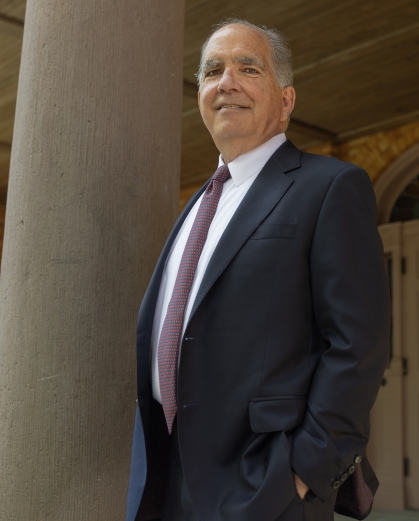
McDonough: The Kean report came out in December 2010, and I was hired two months later to take over government affairs at Rutgers. My primary mission was to get the medical school that we’d wanted for 25 years, to bring the Kean report to life, essentially.
It took more than a year to translate the report’s recommendations into a piece of legislation, which wasn’t formally introduced in the State Senate until June 2012. Crafting an acceptable bill was a moving target. For the longest time, there wasn't a bill at all, just broad concepts that coalesced into legislation at the very last minute.
Rodgers: I became president of UMDNJ in January of 2012, and for about six months, we were doing parallel planning. We expected that Robert Wood Johnson Medical School and the School of Public Health would go to Rutgers, but we also planned for the creation of what we were calling the New Jersey Health Sciences University. We anticipated that the rest of UMDNJ would remain its own separate entity, aside from the School of Osteopathic Medicine, which would probably go to Rowan University (as it did).
But then political leaders in Trenton started looking at the money and UMDNJ bonded debt. We had about $674 million of debt, most of it bonded debt to finance new buildings. When the state realized this, people started saying, “Wait a minute, if we allow this New Jersey Health Sciences University to come into existence, we, the state, are going to be on the hook for that portion of the debt.” So, the state said to Rutgers, “If you want Robert Wood Johnson Medical School, you're going to have to take it all.”
Weinstein: To be fair, there was wide, wide disagreement about what the bill should look like. For example, whether Rutgers Law or Rutgers–Camden would become part of Rowan University – as Gov. Christie and others had originally wanted. Neither ended up happening. The governor accepted that to get this over the finish line, flexibility was needed.
McDonough: He may not have gotten everything he wanted, but he got the integration done. He won.
Weinstein: He won big time.
Part 2: Managing the Minutiae
When the final piece of legislation was brought to a vote on June 28, 2012, the bill passed the General Assembly by 61-17 and in the Senate by 29-10. Then the real work began. Over the next 12 months, Rutgers and UMDNJ staff worked to weave two large institutions seamlessly together in what would become the largest higher-education merger in U.S. history.
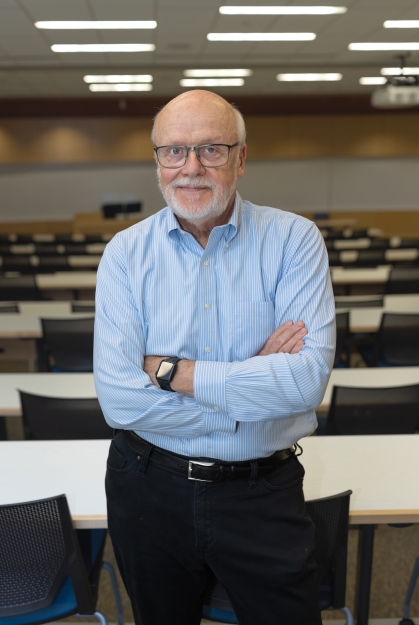
Molloy: While the legislation was being drafted, I was selected by then-Rutgers President Richard McCormick for a new position as interim provost for biomedical and health sciences with the mandate to lead the integration for Rutgers once the bill became law.
To accomplish the process, in partnership with the consulting firm PWC, an integration management office (IMO) was created that coordinated the activities of multiple integration teams managing the details. Overseeing the IMO initially was an executive steering committee that included each university president – Dr. Rodgers and Dr. McCormick. The newly named Rutgers President, Robert L. Barchi, past president of Thomas Jefferson University and former provost of the University of Pennsylvania, assumed leadership of the process when he joined Rutgers in the fall of 2012.
Molloy: I had previous experience in the pharmaceutical industry before coming to Rutgers and had experienced large corporate mergers before. Culturally, they can be very complicated. But for industry, the focus is about restructuring to achieve a stronger business model, i.e., a better bottom line. In this situation there was a larger vision – how to re-create an integrated public research university that allowed medical education, health services, patient care and life sciences research to flourish in New Jersey. The goal was for Rutgers, The State University of New Jersey, to go from “good to great” by adding the clinical and life science research strengths of UMDNJ. And, of course, a great deal of state and local politics was involved.
Rodgers: For most people on the academic side at UMDNJ, there actually was never a period where there was a lot of discussion about closing any of the schools or losing jobs. There was a lot of that on the part of the administration. But Rutgers was getting into a business that it had never been in before – the business of health care. It was our people – from information technology to facilities services – who had the expertise to put in place systems that were going to work.
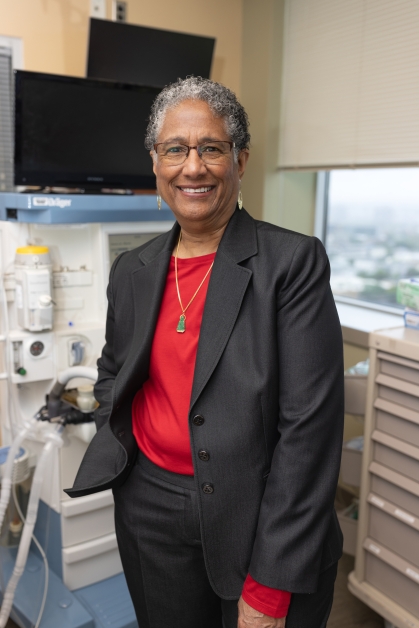
Molloy: The integration teams covered all aspects of the merger – academic, educational and clinical programs, IT systems, human resources, facilities, housing, etc. Teams had co-leaders from each university – one from UMDNJ and one from Rutgers. Leading into day one – July 1, 2013 – more than 20,000 items had been re-branded, over 10,700 personnel were transferred, and more than 1,000 policies and 3,700 contracts were reviewed or updated. Integrating the UMDNJ students was a particular challenge. We were advised that to avoid any federal financial aid interruptions each individual student record needed to be transferred overnight before July 1. This was accomplished by a dedicated team of staff working through the night to move the records of thousands of students to Rutgers in less than 12 hours.
Rodgers: My leadership philosophy at the time was really to say that our primary obligation was to make sure that this process did not interfere with student education or patient care. I think we managed to do that well.
Molloy: Essentially, we only had a year to accomplish what is still the largest university integration in higher education in the United States. It was a very challenging process, with many obstacles, but ultimately the work of many individuals from both universities – from senior leaders to “rank and file” staff members, pulled together to get the job done. It was a very rewarding experience, and my role as leader of the IMO and overall integration is one that I am most proud of during my time at Rutgers.
Part 3: RBHS and an Emphasis on One
In late 2013, Rutgers appointed Brian L. Strom as RBHS’s first chancellor, a position he still holds. A clinician and researcher in epidemiology, Strom is a hands-on leader with a strong reputation in academia and the health care industry. As one faculty member noted, “Quite frankly, had it been a lesser man than Brian Strom, I think [the change in governance] would have been really tough.”
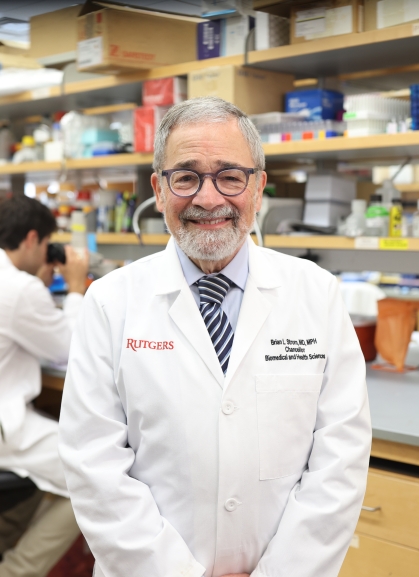
Strom: My mantra since I arrived, my first and last slide so to speak of all my talks, is to build one of the best academic medical centers in the country. Before RBHS was created, the people of New Jersey needed to go to New York or Philadelphia for the highest level of care. That had financial implications for the state because it was losing the revenue from the most remunerative care. It also had financial implications for patients, as care was much more expensive to the patients when patients went out of their insurance network. This was particularly problematic for patients who are underprivileged because they couldn't afford to go outside the state.
From a talent point of view, the move to Rutgers has enabled us to recruit fantastic talent, and research the extremely strong faculty who were already here. From a research point of view, the new structure has enabled us to dramatically increase our extramural funding, with that bringing federal funds into the state and stimulating the state’s pharma and biotech industries.
Because of RBHS, Rutgers is now a complete university – both from a health education standpoint and because of our ability to translate research into results. While our work isn’t done, our success during COVID-19 – from retrofitting respirators to developing vaccines – demonstrates just how far we’ve come.
Rodgers: I do think the university is stronger because of the integration, and some important synergies have happened. I'll use myself as an example. I'm the principal investigator on a project called the Rutgers Equity Alliance for Community Health, a four-year, $10 million initiative funded by the Robert Wood Johnson Foundation that is focused on addressing social determinants of health in three cities – Newark, Camden and New Brunswick.
New Jersey is not a state that has a lot to be proud of in terms of the health outcomes of people of color compared to whites, particularly African Americans. I’m hoping that over time, more and more people within RBHS and other parts of Rutgers will engage in the kind of research and other activities that can help eliminate those disparities. This is work that wouldn’t have been possible or as effective if we weren’t part of Rutgers.
Strom: Where do we go from here? We will continue working to build one of the best academic centers in the country by increasing our offerings to the public and the state. In the process, we will continue stimulating New Jersey’s biomedical economy. Over the next few years our presence in New Brunswick and Newark will grow with new facilities.
The future of medicine is preventive care and population health, which means keeping people healthy and out of the hospital. But when a hospital is needed, patients can be treated right here in New Jersey, something the UMDNJ-Rutgers merger has helped to make possible.

